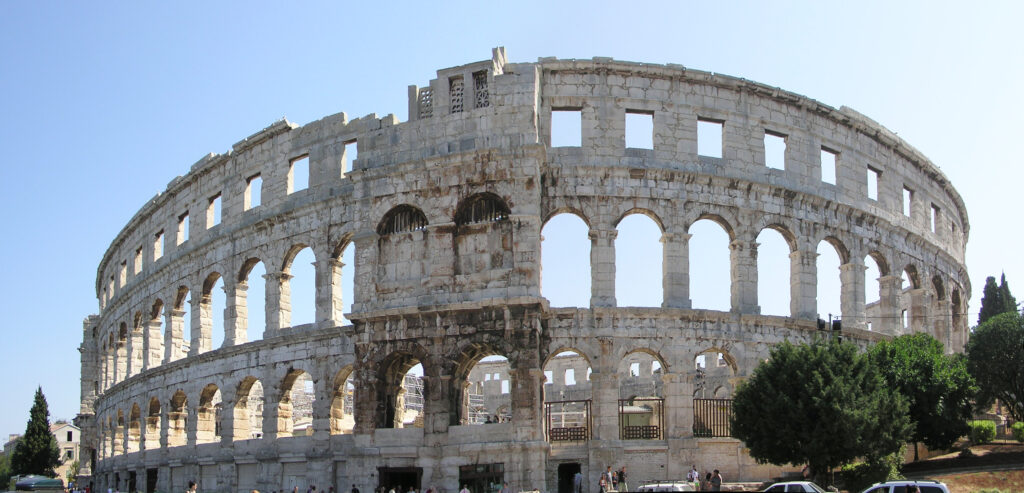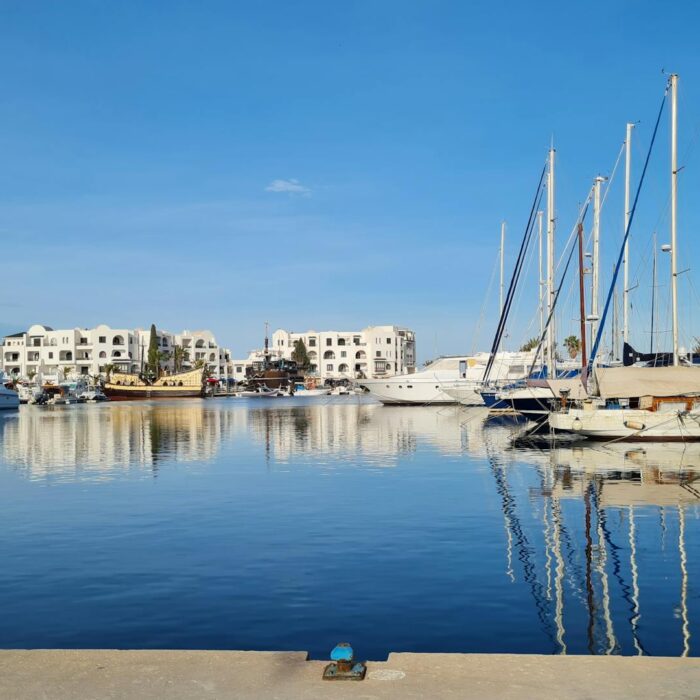Quick facts about Croatia:
- Location: Southeast Europe, Adriatic Sea coastline.
- Capital: Zagreb.
- Population: Around 4 million.
- Language: Croatian.
- Currency: Croatian Kuna (HRK).
- Size: Approximately 56,594 sq km.
Fact 1: Croatia has more than 1,200 islands
Croatia’s extensive archipelago of more than 1,200 islands is a result of its unique geographical position along the Adriatic Sea. The country’s intricate coastline, stretching over 5,800 kilometers, is characterized by numerous coves, bays, and inlets, fostering the formation of a vast number of islands. The geological processes, including tectonic activity and sea level changes, have contributed to the diverse landscapes of these islands.
This abundance of islands has become a significant asset for Croatia. Beyond the stunning natural beauty they provide, the islands play a crucial role in the country’s tourism industry. They offer a wide range of experiences, from tranquil retreats to vibrant cultural hubs, attracting visitors from around the world. The islands also contribute to the preservation of biodiversity and serve as important ecological habitats.

Fact 2: Croatia has stunning nature
Croatia is renowned for its stunning natural landscapes, and the country boasts several beautiful national parks. These parks are characterized by diverse ecosystems, including lush forests, cascading waterfalls, and pristine lakes. Some notable national parks in Croatia include:
- Plitvice Lakes National Park: Famous for its interconnected lakes and waterfalls, Plitvice Lakes is a UNESCO World Heritage site and one of the oldest national parks in Southeast Europe.
- Krka National Park: Known for its magnificent waterfalls, particularly Skradinski Buk, Krka National Park is a haven for nature lovers.
- Paklenica National Park: Situated in the Velebit mountain range, Paklenica is a paradise for hikers and climbers, offering breathtaking canyons and diverse flora and fauna.
- Brijuni National Park: Comprising a group of islands, Brijuni National Park is celebrated for its scenic beauty, archaeological sites, and a diverse range of plant and animal species.
These national parks showcase Croatia’s commitment to preserving its natural heritage and provide visitors with opportunities to explore and appreciate the country’s breathtaking scenery.
Fact 3: There’s a Roman amphitheater in Croatia
Croatia is home to the impressive Roman amphitheater known as the Pula Arena, located in the city of Pula. Constructed in the 1st century CE, the Pula Arena is one of the six largest surviving Roman arenas in the world. It was primarily used for gladiatorial contests and could accommodate over 20,000 spectators.
The arena’s well-preserved structure stands as a testament to the architectural prowess of the Roman Empire. Today, the Pula Arena is a popular tourist attraction and serves as a venue for various events, including concerts and film festivals. Its historical significance and architectural grandeur make it a captivating site for visitors interested in ancient Roman history and culture.

Fact 4: Nikola Tesla was born in Croatia
Nikola Tesla, a renowned inventor, electrical engineer, and futurist, was born in the village of Smiljan, which was part of the Austrian Empire at the time of his birth. Today, Smiljan is located in modern-day Croatia. Tesla’s contributions to the development of alternating current (AC) electrical systems and numerous inventions in the field of electromagnetism have left a lasting impact on technology.
Tesla, Inc., an American electric vehicle and clean energy company, was named in honor of Nikola Tesla. The company produces electric cars and renewable energy products and is known for its innovation in electric vehicle technology.
Fact 5: Dubrovnik is an excellently preserved old trading city
Dubrovnik, nestled on the picturesque Adriatic Sea in Croatia, is celebrated for its incredibly well-preserved medieval charm as an ancient trading hub. Enclosed by 16th-century stone walls, the city’s UNESCO-listed Old Town evokes a sense of timeless beauty. Once known as Ragusa, Dubrovnik thrived as a bustling maritime center during the Middle Ages, leaving an indelible mark on its architecture and culture.

Fact 6: Croatia’s Riviera is worth the drive to get there
Stretching along the stunning Adriatic coastline, the Croatian Riviera offers a picturesque blend of crystal-clear waters, charming coastal towns, and historic sites. From the vibrant city of Split with its ancient Diocletian’s Palace to the enchanting beauty of Dubrovnik’s Old Town, driving along the Adriatic coastline provides a scenic and rewarding journey.
The Dalmatian Coast, in particular, is famous for its dramatic landscapes, idyllic islands, and inviting beaches. Whether exploring the historic streets of Rovinj, enjoying the vibrant atmosphere of Zadar, or basking in the natural beauty of the Plitvice Lakes, the Croatian Riviera promises a road trip filled with diverse experiences and breathtaking views. The drive becomes an integral part of the adventure, allowing travelers to uncover the treasures of the Adriatic at their own pace.
Note: If you are planning a trip, check if you need an International Driving License to drive in Croatia.
Fact 7: The Dalmatian dog breed was bred in Croatia
This breed is considered one of the oldest, and the exact dates of its formation are often difficult to establish. However, Dalmatians became widely known in the 18th and 19th centuries in Europe, especially in England. These dogs were traditionally used as carriage dogs, guard dogs, and firehouse mascots. Their striking appearance and playful nature have made them popular not only as working dogs but also as beloved companions and, famously, as characters in various films and books.

Fact 8: Croatia has many vineyards, but people drink more beer than wine
Croatia is known for its flourishing vineyards, producing a variety of high-quality wines. However, when it comes to beverage preferences, beer tends to be more popular than wine among the locals. Beer culture is deeply ingrained in Croatian social gatherings, and a variety of local and international beer brands are enjoyed across the country. Despite the prominent wine culture, especially in regions like Istria and Dalmatia, beer remains a widely consumed and favored beverage in Croatia.
Fact 9: Croatia has clean drinking water from the tap
Croatia is known for having high-quality and clean drinking water directly from the tap. The country has invested in modern water infrastructure and adheres to stringent water quality standards. In urban and rural areas alike, residents and visitors can generally rely on the tap water as safe for drinking without the need for additional filtration or purification. This accessibility to clean drinking water is an important aspect of Croatia’s overall infrastructure and contributes to the convenience and comfort of those living in or visiting the country.

Fact 10: Croatia produces quality olive oil
Croatia is renowned for producing high-quality olive oil. The country’s favorable climate and diverse landscapes, particularly in regions like Istria and Dalmatia, provide ideal conditions for cultivating olive trees. Croatian olive oil is celebrated for its rich flavor profile, often characterized by a balance of fruity and peppery notes.
Various indigenous olive varieties, coupled with careful cultivation and harvesting practices, contribute to the exceptional quality of Croatian olive oil. The olive oil industry has gained recognition both domestically and internationally, and Croatian olive oils frequently receive awards at prestigious competitions.

Published February 25, 2024 • 6m to read





